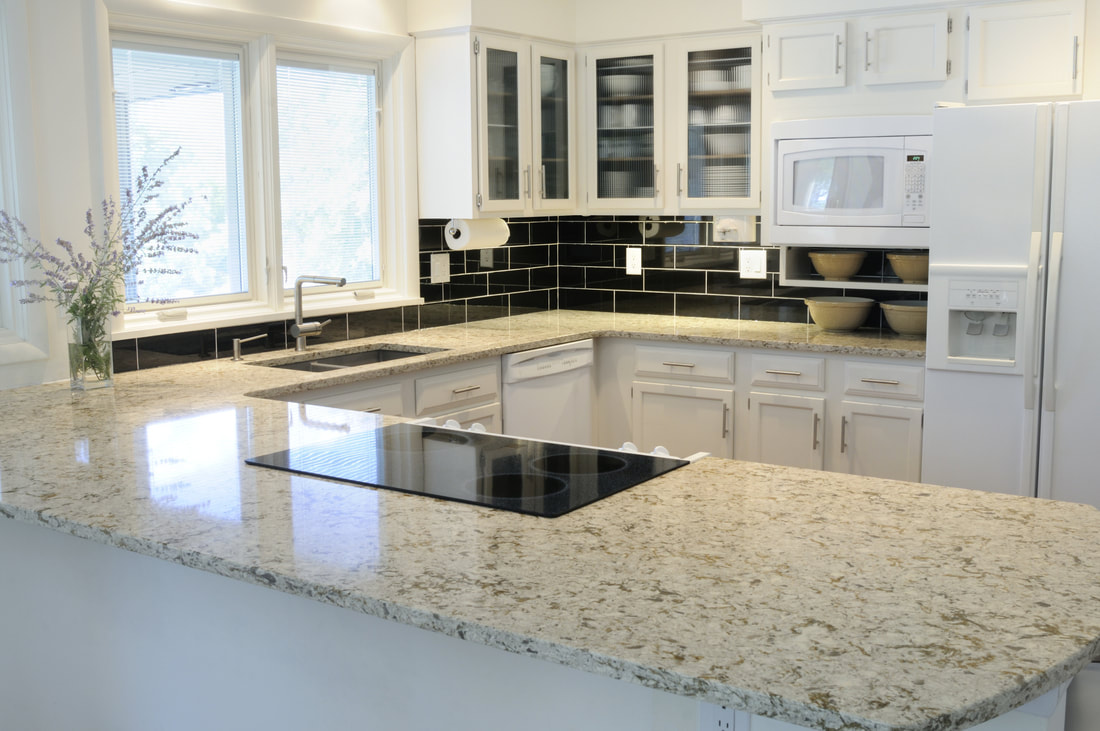
GRANITE GIVES YOU MANY DESIGN OPTIONS
Since it is made up of many different types of crystals, the color of granite varies quite a bit depending on the crystal that makes up the majority of a given piece of stone. The most common colors include white, gray, black, pink, and orange. Occasionally greens, browns, and blues make an appearance as well.
Here are the crystals that make up granite and how they produce the unique colors and visual qualities only found in granite.
Quartz
Quartz is the most common crystal in granite. It fills in any gaps around other materials and is responsible for many of granite's best qualities. It is colorless and appears either clear, smoky, or reflects the colors of the crystals around it. Quartz aids granite in being resilient to impact, heat, and daily wear.
Mica
Mica has a metallic luster that adds to granite's ability to hold that just-polished look. It brings the sliver, black, brown, violet, and pink shades to granite.
Feldspar
Feldspar is the second most common substance in granite. Feldspar is responsible for most of the colors you see in granite. It creates yellow, orange, pink and blue hues. Darker feldspars make black granite.
Horneblend & Biotite
The famous gray stone sprinkled with black and white that first comes to mind when you think about granite is also the most commonly available. This salt and pepper look comes from hornblende and biotite crystals.
With so many colors to choose from, it is easy to select granite that will fit in with your kitchen or bathroom design and yet remain timeless.
Since it is made up of many different types of crystals, the color of granite varies quite a bit depending on the crystal that makes up the majority of a given piece of stone. The most common colors include white, gray, black, pink, and orange. Occasionally greens, browns, and blues make an appearance as well.
Here are the crystals that make up granite and how they produce the unique colors and visual qualities only found in granite.
Quartz
Quartz is the most common crystal in granite. It fills in any gaps around other materials and is responsible for many of granite's best qualities. It is colorless and appears either clear, smoky, or reflects the colors of the crystals around it. Quartz aids granite in being resilient to impact, heat, and daily wear.
Mica
Mica has a metallic luster that adds to granite's ability to hold that just-polished look. It brings the sliver, black, brown, violet, and pink shades to granite.
Feldspar
Feldspar is the second most common substance in granite. Feldspar is responsible for most of the colors you see in granite. It creates yellow, orange, pink and blue hues. Darker feldspars make black granite.
Horneblend & Biotite
The famous gray stone sprinkled with black and white that first comes to mind when you think about granite is also the most commonly available. This salt and pepper look comes from hornblende and biotite crystals.
With so many colors to choose from, it is easy to select granite that will fit in with your kitchen or bathroom design and yet remain timeless.
Precision Marble & Granite
Robson R Dacosta
[email protected]
781 488 8697
Joseph Mouzer
[email protected]
59 Lone Street
Marshfield, MA 02050
339.793.1404
Robson R Dacosta
[email protected]
781 488 8697
Joseph Mouzer
[email protected]
59 Lone Street
Marshfield, MA 02050
339.793.1404
